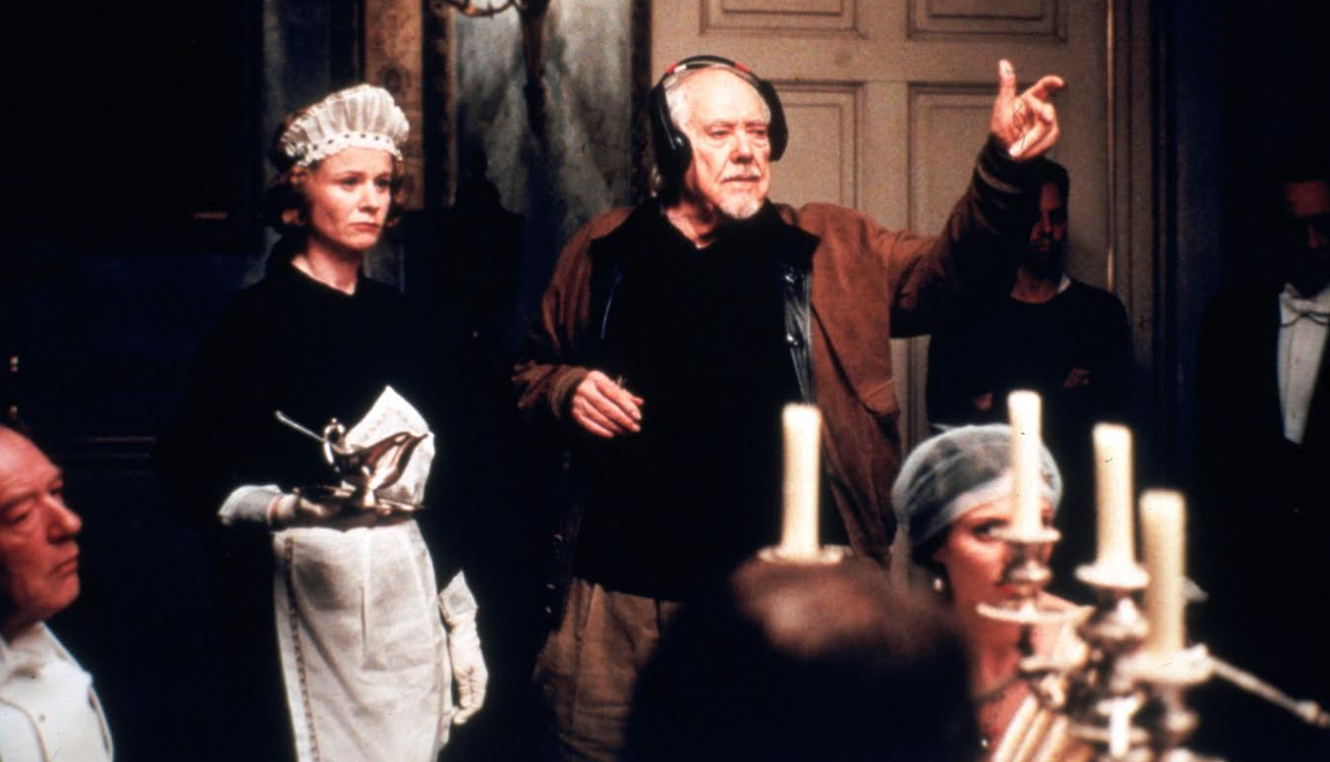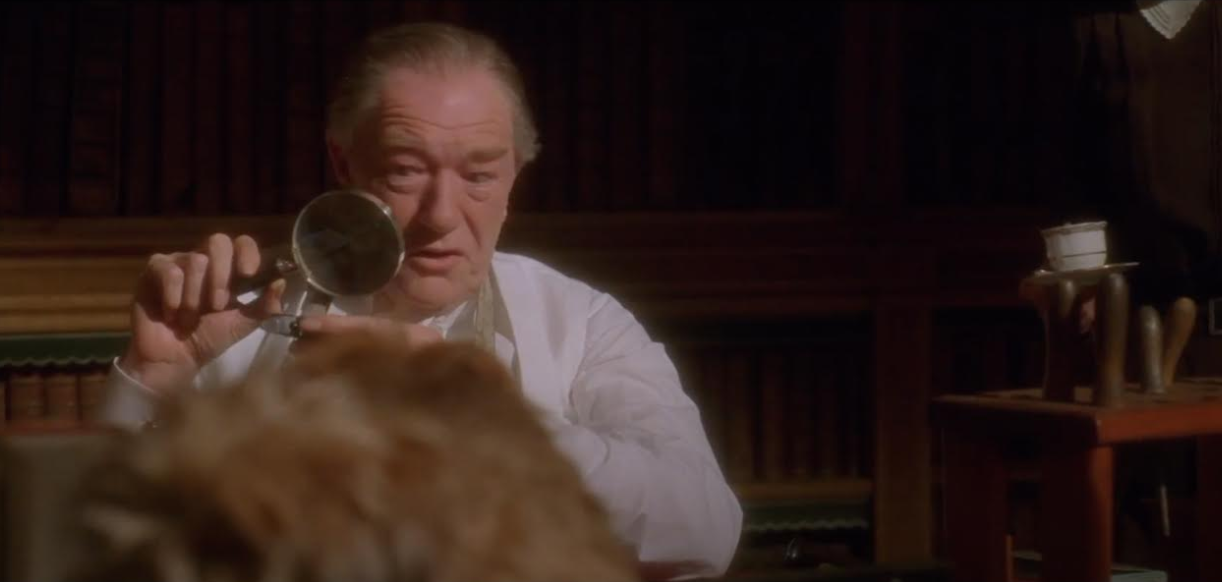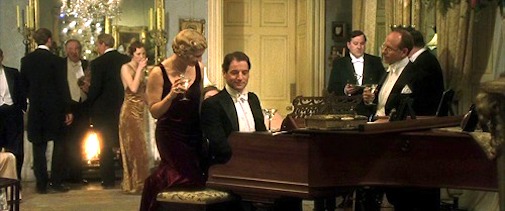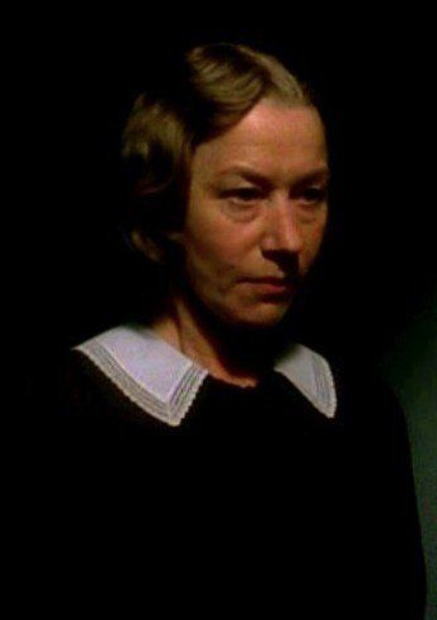Hey everyone. Michael Cusumano here. If you've got to be trapped inside, why not be trapped inside with thirty or so of the greatest British actors ever? 18-year-old mystery spoilers ahead!

Scene: The Murder of Willam McCordle
I don’t think you can count yourself as having seen a Robert Altman film unless you’ve seen it three times, minimum. All great films expand on rewatch, but Altman movies transform, accumulating power as additional dimensions come into focus. In no film is this more apparent than his late-period masterwork, Gosford Park...
Presented with that most plot-centric of genres, the Drawing Room Murder Mystery, he proves an able game master. Aided by Julian Fellowes’ sterling screenplay, he doles out the required servings of suspects, red herrings, and long buried secrets. But in Altman’s hands the genre trappings are just the outside layer of the puzzle box. Gosford Park is a tragedy wrapped in a satire inside a mystery.
Take Gosford Park’s centerpiece sequence: The murder of William McCordle.

On initial viewing, viewers are lucky to get their full bearings before Gambon takes a knife to the chest. The cast is large and the exposition is sparse, even by Altman standards. We are plunged into the fray, left to sort out the hierarchy of three dozen guests and servants. On top of which you have the challenge of the mystery. Are important clues zipping past while you are trying to sort out, say, the difference between a butler and a valet? (It wasn’t so clear in a pre-Downton world.)
During the murder, Altman and Fellowes do the necessary buisness of placing several suspects off-stage at the crucial moment, even if they don’t go to great pains to disguise Helen Mirren’s Mrs Wilson as the likeliest culprit. There’s no mistaking the moment when Mirren lingers on the photo at the bedside of Clive Owen’s mysterious valet. To a degree, the filmmakers were able to give her story the weight it needed because viewers would inherently distrust what they were presented for fear of falling for a misdirect, hiding her in plain sight.
On a second viewing, without our guard up against plot trickery, we relax and appreciate the elegance of the film’s construction. The double murder is clever enough to be satisfying without straining credulity the way Hercule Poirot-type plot machinations often do. The cavalcade of suspects is not simply there to camouflage the guilty party, but are thematically on point, variations on the upper-class’s willingness to casually destroy anyone perceived as beneath them, women especially. Everywhere you look in Gosford Park women are being used and discarded.

The scene is scored by celebrity dinner guest Ivor Novello’s performance and the downstairs staff sneaking to catch a snippet of his singing is one of the sweetest grace notes Altman ever put to film. At the same time, the repeated entreaties from the guests for Norvello to perform are a not-so-subtle way of reminding him that as an entertainer who works for a living, he's not really one of them. He's a novelty for the swells.
(It’s saying a lot that Maggie Smith’s withering asides are merely icing on top of this virtuoso sequence. They alone would be justification enough for a different film to exist.)
 The third viewing is the magic viewing. The idea that this was ever a game of whodunnit melts away. We realize that the real gut punch isn’t the killer’s identity (The maid did it! To protect her long-lost son!) but that it was easy for the maid to do it because she worked for years in close proximity to this toxic spill of a human being. McCordle could have been spared his fate if he bothered to cover his tracks or if he sent away Mirren because he couldn’t bear to look her in the eye, but no. It simply never occurred to him he would be called to account for his sins. Not only did McCordle feel no guilt for impregnating (raping?) one of his young employees and tossing their baby in an orphanage without a backward glance, the man was so utterly shameless that he kept her close at hand to witness him repeat the cycle with younger women. It’s as if Judge Turpin knew exactly who Sweeney Todd was and continued to employ him as a barber for decades.
The third viewing is the magic viewing. The idea that this was ever a game of whodunnit melts away. We realize that the real gut punch isn’t the killer’s identity (The maid did it! To protect her long-lost son!) but that it was easy for the maid to do it because she worked for years in close proximity to this toxic spill of a human being. McCordle could have been spared his fate if he bothered to cover his tracks or if he sent away Mirren because he couldn’t bear to look her in the eye, but no. It simply never occurred to him he would be called to account for his sins. Not only did McCordle feel no guilt for impregnating (raping?) one of his young employees and tossing their baby in an orphanage without a backward glance, the man was so utterly shameless that he kept her close at hand to witness him repeat the cycle with younger women. It’s as if Judge Turpin knew exactly who Sweeney Todd was and continued to employ him as a barber for decades.
In the end, Gosford Park upends the usual destination of the genre. The prevailing mood at the resolution isn’t one of justice served but of futility. “What possible purpose would it serve” is the repeated refrain. The years of pain can’t be undone, and the fact that a killer got the bastard a little time ahead of an inevitable stroke or a heart attack is cold comfort. We may know who done it, but we also know how little it changes.
Follow Michael on TWITTER and LETTERBOXD.
Previous episodes of The New Classics here.